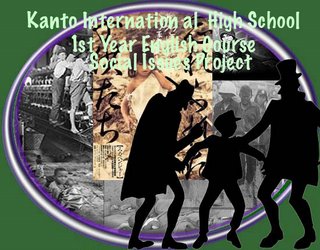
A Profile of South Africa
Population Density: 35 people per square kilometer
Birth Rate: 27 per thousand population each year
Death Rate: 12 per thousand population each year
Natural Increase: 1.5 % each year
Doubling Time: 46 years at current rate
Infant Mortality Rate: 53 deaths per thousand live births
Total Fertility Rate: 3.2 children during a woman's lifetime
Younger than 15 years old: 35 % of population
Older than 6o years old: 5 % of population
Source: http://www.alsagerschool.co.uk/subjects/sub_content/geography/Gpop/HTMLENH/country/za.htm

Causes of Homelessness in South Africa.
1. Low opportunity for employment
“The unemployment rate is passing 30% and the 44 million people of that country rely upon a total workforce of 15 million. Job opportunities are virtually nonexistent and the economy of South Africa continues to fall below third-world standards - 4.4”
2. Settler problem
“An estimated seven million people in South Africa live in 'informal settlements' or ‘squatter camps’ - and that number is set to grow as more rural dwellers flock to urban areas, escaping drought and seeking jobs. The problem is compounded by illegal immigrants from Mozambique, Zimbabwe and Malawi - about 5 million - who are fleeing drought, economic difficulties and political oppression in their own countries. These refugees come on top of an already frightening growth rate Africa's population is projected to double in 23 years."
Source:http://www.alsagerschool.co.uk/subjects/sub_content/geography/Gpop/HTMLENH/patp/pp86.htm
3. Gap between small income class and large income class.
In South Africa, the gap between the small income class and the large income is very big. The people who earn much money are very few, but poor people in South Africa are numerous, so, South Africa’s society is very unbalanced, in my opinion.

Agencies working in South Africa to help the homeless?
1. AAPCI/AFRICA
According to the AAPCI website AAPCI/AFRICA is, “an independent subsidiary of the African American Planning Commission, was conceived in 1998 as a nonpartisan, Non-Governmental Organization (NGO). AAPCI/AFRICA's mission is to collaborate with established NGOs on the African continent in an effort to combat the HIV/AIDS pandemic, which continues to decimate whole communities in Sub-Saharan Africa.”
“AAPCI/AFRICA's strategy is to develop a community healthcare center and provide healthcare services to the most marginalized, vulnerable and underserved. In addition to medical services, the health center will serve as a means by which AAPCI/AFRICA can disseminate information to local communities through Outreach efforts and public information campaigns.”
Source: http://www.aapci.org/about/index.htm
2. UNICEF
United Nations Children's Fund. Works to help poor children.
Source: http://www.unicef.org/whatwedo/index.html
What these agencies are doing in order to help the homeless
APPCI/AFRICA
Serenity House
“The goal of this important project is to develop safe, permanent, affordable housing with on-site support services for homeless families. With our financial support, the African American Planning Commission can develop much needed affordable housing.”
Source: http://www.aapci.org/about/founder_bio.htm
UNICEF
1. Child protection
“UNICEF believes that the protection of children is crucial to their survival, health, and well-being. Everyday millions of children are exploited, abused, or are victims of violence. Bought and sold like commodities, children are forced to be soldiers, prostitutes, sweatshop workers, and servants. Abuse, exploitation and violence, occurring usually in private, are often elements in organized crime and corruption. Only time reveals the consequences: children uneducated, unhealthy and impoverished.”
2. Early childhood
“Every child must be ensured the best start in life – their future, and indeed the future of their communities, nations and the whole world depends on it.
Every year, some 132 million infants around the world begin an extraordinary sprint – from defenceless newborns to becoming proactive young children ready for school. And every year, countless numbers of them are stopped in their tracks – deprived, in one way or another, of the love, care, nurturing, health, nutrition and protection that they need to survive, grow and develop. Nearly 11 million children die before their fifth birthday each year and tens of millions more are left with physical and/or mental disabilities or learning impairment – solely because they and their caregivers lack the basic conditions needed for young children to survive and thrive.”
Source: http://www.unicef.org/whatwedo/index.html
What we can do to help the homeless in South Africa.
Research the AAPCI‘s activities and try to contribute a little money.
I think that we should know about the homelessness problem and try to help the homeless around us.

I researched homelessness in South Africa. In my research, I found that there are many homeless in South Africa. There are many causes of homelessness. About seven million people are settlers from Mozambique, Zimbabwe and Malawi because of economic problems, drought, political problems and so on. Also, according to the UN, about 500,000 families have been evicted from their homes and many people, including children, have been killed in the chaos surrounding the evictions process. Therefore, low opportunities, economic problems, and the settler problem are the causes of homelessness in South Africa.
My research is based on official agencies’ research. So, these numerical values are not exact. I think there are more homeless in South Africa than the research shows. I think all of the people in the world should try to help the homeless because they also have human rights.














































